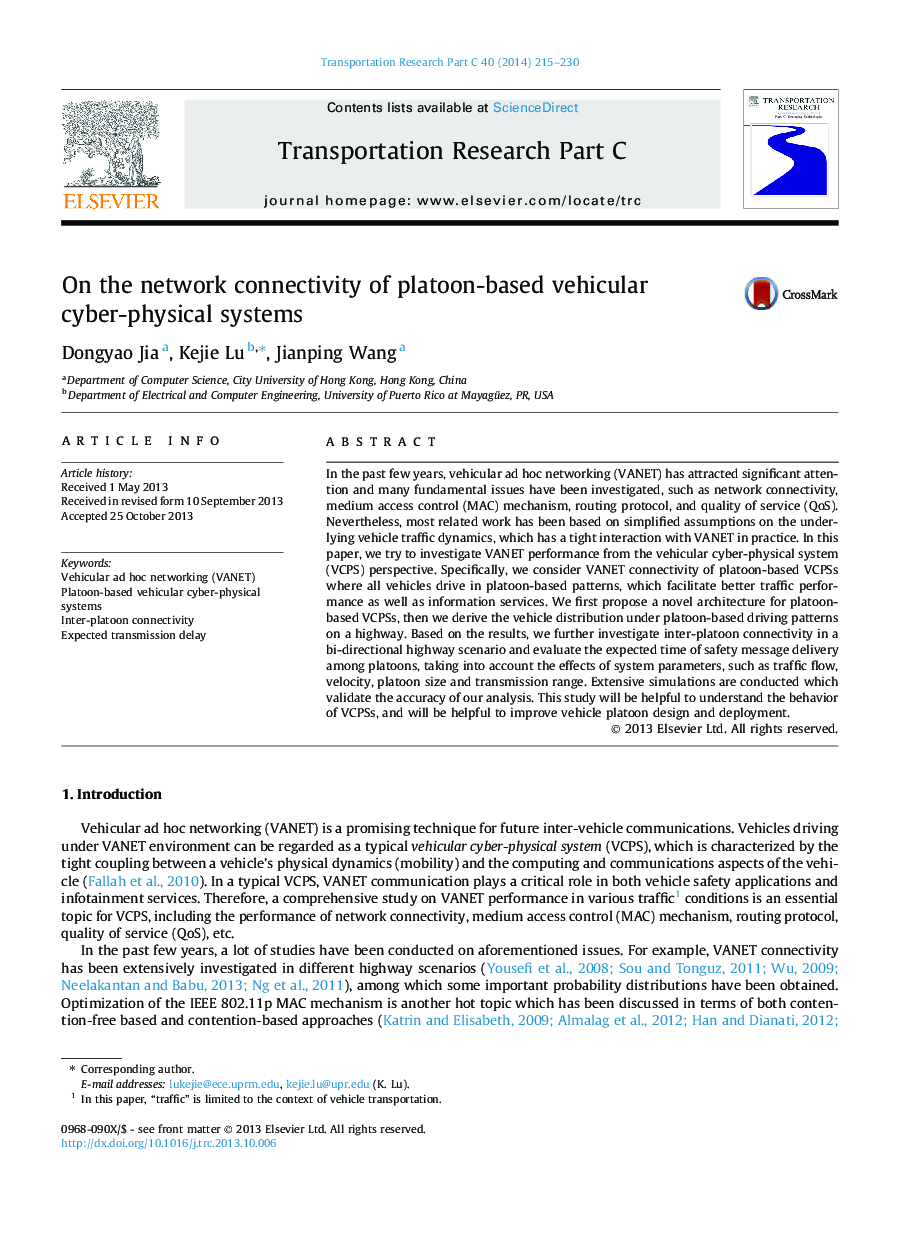| Article ID | Journal | Published Year | Pages | File Type |
|---|---|---|---|---|
| 525279 | Transportation Research Part C: Emerging Technologies | 2014 | 16 Pages |
•We develop a novel architecture for platoon-based VCPSs.•We explore the characteristics of VANET performance from the perspective of VCPS.•We analyze the inter-platoon connectivity issue.•Our analysis considers VANET connectivity and various platoon parameters.•Our analysis can be utilized as references for VCPS performance optimization.
In the past few years, vehicular ad hoc networking (VANET) has attracted significant attention and many fundamental issues have been investigated, such as network connectivity, medium access control (MAC) mechanism, routing protocol, and quality of service (QoS). Nevertheless, most related work has been based on simplified assumptions on the underlying vehicle traffic dynamics, which has a tight interaction with VANET in practice. In this paper, we try to investigate VANET performance from the vehicular cyber-physical system (VCPS) perspective. Specifically, we consider VANET connectivity of platoon-based VCPSs where all vehicles drive in platoon-based patterns, which facilitate better traffic performance as well as information services. We first propose a novel architecture for platoon-based VCPSs, then we derive the vehicle distribution under platoon-based driving patterns on a highway. Based on the results, we further investigate inter-platoon connectivity in a bi-directional highway scenario and evaluate the expected time of safety message delivery among platoons, taking into account the effects of system parameters, such as traffic flow, velocity, platoon size and transmission range. Extensive simulations are conducted which validate the accuracy of our analysis. This study will be helpful to understand the behavior of VCPSs, and will be helpful to improve vehicle platoon design and deployment.
